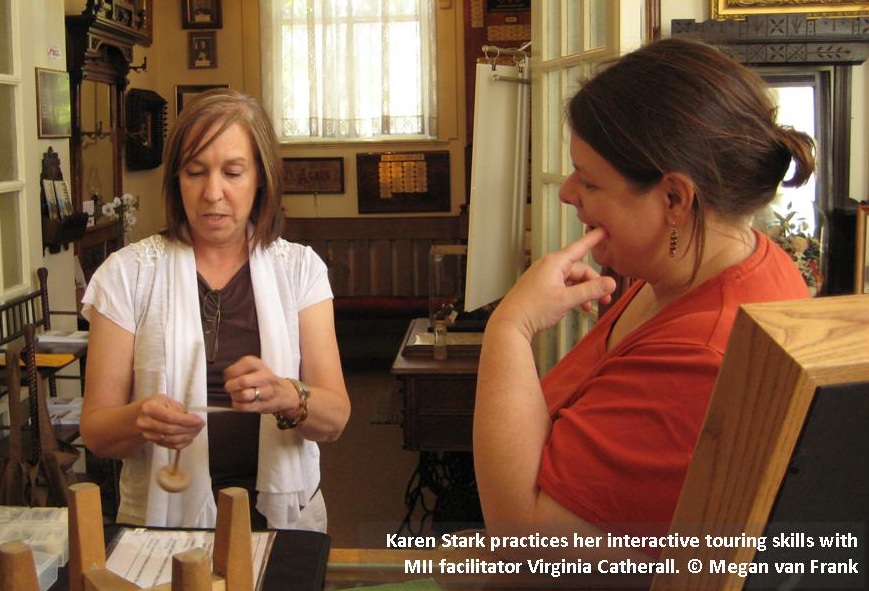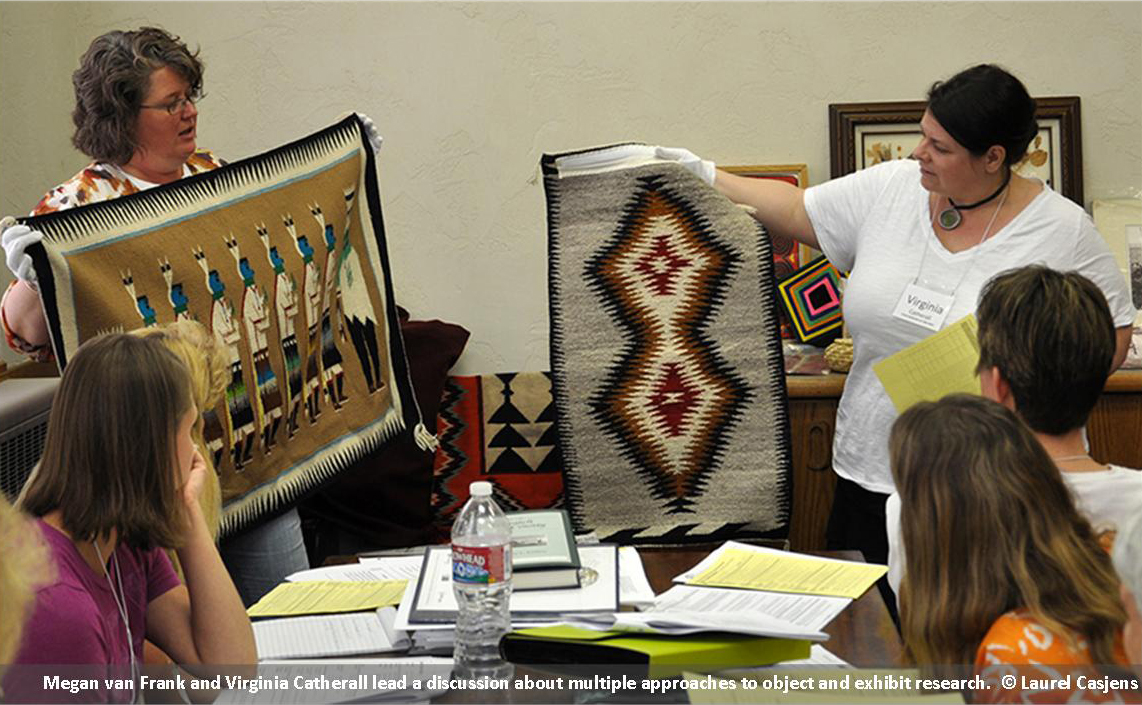By Karen Stark
Coming to Salt Lake City for the Western Museums Association 2013 Annual Meeting? Here’s your chance to participate in pre-conference intensive workshop based on Utah’s award-winning program that helps small museums learn how to create inexpensive interpretive exhibits that excite, engage, and educate visitors.
All across the West there are small museums full of historical and cultural treasures, rich heritage, and wonderful stories needing to be shared. Most are run by a small, but passionate staff struggling with meager resources just to do the basics. How can we create good exhibits to effectively tell our stories? Face it, we are not Hollywood. We don’t have large budgets, the ability to hire experts and create elaborate sets with high-tech gadgets and special effects. How can we possibly compete with large museums capable of those kinds of things?
In reality, effective story telling is not about money at all. Isn’t it the stories we want visitors to remember and think about, rather than a flashy presentation? Telling stories effectively is more about knowledge, understanding, organization, creativity, and imagination.
 A desire to help empower small museums to tell their stories was the motivation behind Utah’s Museum Interpretation Initiative: Telling Our Stories program (MII), a joint project of the Utah Humanities Council and the Utah Museums Association, supported by an IMLS 21st Century Museum Professional Development grant. I was fortunate to be involved in the first year of the three-year MII program, which consisted of a series of three day-long, hands-on workshops over six months, where fellow participants and I learned to create interpretive exhibits and educational tours at our own museums. I came away from the program armed with knowledge, skills, resources, and, most importantly, a new attitude and perspective about using a museum collection to tell meaningful stories. I realized that simply displaying historical objects with identifying labels did not even begin to convey their meaning and certainly was not fulfilling the museum’s mission to tell the stories of our community and its settlers.
A desire to help empower small museums to tell their stories was the motivation behind Utah’s Museum Interpretation Initiative: Telling Our Stories program (MII), a joint project of the Utah Humanities Council and the Utah Museums Association, supported by an IMLS 21st Century Museum Professional Development grant. I was fortunate to be involved in the first year of the three-year MII program, which consisted of a series of three day-long, hands-on workshops over six months, where fellow participants and I learned to create interpretive exhibits and educational tours at our own museums. I came away from the program armed with knowledge, skills, resources, and, most importantly, a new attitude and perspective about using a museum collection to tell meaningful stories. I realized that simply displaying historical objects with identifying labels did not even begin to convey their meaning and certainly was not fulfilling the museum’s mission to tell the stories of our community and its settlers.
Over the three years of the MII program, more than 100 individuals from 50 small museums all around Utah received training, resources and equipment, as well as assistance to create interpretive exhibits and programs in their museums. The MII was awarded a Leadership in History Award of Merit from the American Association for State and Local History in 2012. The MII website showcases this project and the exhibits created throughout Utah.
Attendees of the Western Museums Association, in partnership with the Utah Museums Association, 2013 Annual Meeting: Drive On! Museums and the Future have the opportunity to participate in a day-long version of this successful program. A pre-conference workshop titled Interpretive Exhibits: Telling Our Stories on a Shoestring will be taught by the original MII facilitators, Megan van Frank, Laurel Casjens, and Virginia Catherall. The cost is $45 (which includes lunch) – well worth it for this 9:00 am to 5:00 pm hands-on workshop held on Wednesday October 9, 2013 at the Fort Douglas Military Museum. You can register for the workshop and the 2013 Annual Meeting here.
 Participants in the Telling Our Stories workshop can look forward to:
Participants in the Telling Our Stories workshop can look forward to:
- A full day of instruction from knowledgeable, experienced, and inspirational facilitators
- Gaining an understanding of interpretation and what makes a good interpretative exhibit
- Guidance in best-practice collections research – how to learn from objects and reliable sources to find stories waiting to be discovered
- Learning to evaluate information to get the story right, or in some cases to tell the right story, which may not be the story we first thought
- Understanding and assessing significance of objects and how to place them in context
- Instruction in good theme-based exhibit design principles and planning
- Exploring creative ways to present objects safely, attractively, and meaningfully to convey a big idea
- Writing brief, engaging, accurate, and informative exhibit text – finding the right words to tell the story well
- Hands-on practice to produce attractive, inexpensive exhibit labels
- Exploring ways to engage, excite, and educate visitors through interactive learning experiences, including hands-on teaching and self-guides
- Receiving valuable resource material
- Networking and sharing with other participants
“I feel like they gave us the right tools and concepts to get us started – which is what I hoped for.”
– Participant in Telling Our Stories day-long workshop
Museums of any size could benefit from this workshop. We especially recommend it for:
- Staff, volunteers, and board members from small museums throughout the West
- Those from Utah museums who missed out on previous opportunities
- MII Museums who want to extend this training to other staff, volunteers, or board members
- MII graduates who would like a refresher course
- Field Services professionals looking to develop statewide or regional training programs that would benefit small museums
Plan to begin your WMA 2013 Annual Meeting experience with this foundation and perspective of interpretation, and then build upon it with many other great ideas from conference sessions and networking opportunities. You will return to your museums enlightened, inspired, and empowered to share the stories of your collection and community.
To register for the 2013 Annual Meeting, please visit: www.regonline.com/wma2013
Karen Stark serves on the Board of Directors of the Utah Museums Association and is a Museum Consultant specializing in small and all-volunteer museums. She was the curator at the Weber County Daughters of Utah Pioneers Museum for five years and is currently working with the Brigham City Museum of Art and History.








Add new comment